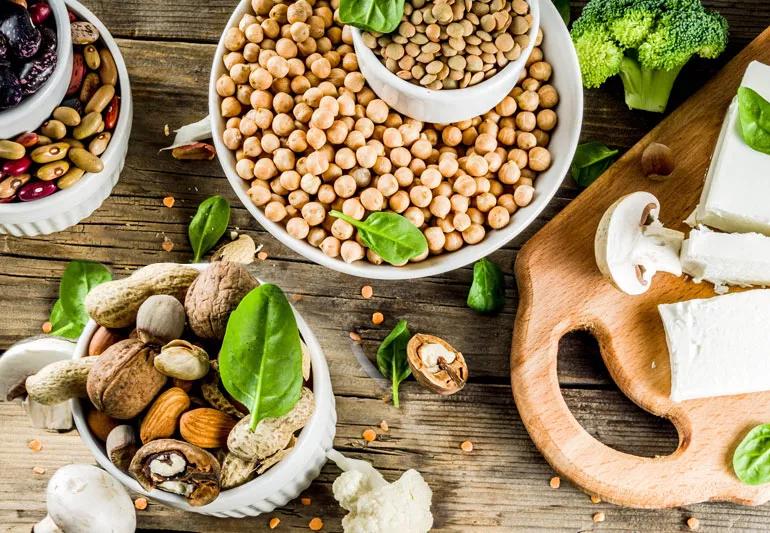Get the right amount from the best sources

Protein is essential to our health and wellness. This slow-burning nutrient takes longer to digest, so it keeps you feeling full: good news for people trying to lose weight. It’s also a champion for your muscles, helping your body build and maintain them.
Advertisement
Cleveland Clinic is a non-profit academic medical center. Advertising on our site helps support our mission. We do not endorse non-Cleveland Clinic products or services. Policy
Another great thing about protein is that it’s a thermogenic, so it helps your metabolism. This means that it creates a slight calorie burn as it’s digested. When compared to carbohydrate rich foods, protein has a greater thermogenic effect. Think of it as giving your digestive system a good, hard run.
But do you know how much protein you need and what the best sources are? Registered dietitian Kate Patton, MEd, RD, CSSD, LD, discusses six tips to help you harness true protein-power.
Protein is made up of essential and non-essential amino acids. A complete protein source is one that contains all nine essential amino acids to support human dietary needs.
Not only does a complete protein contain all essential amino acids, but it also contains them in perfect proportion in terms of biological function. Great examples include whey (dairy sources), lean meat, egg whites and soy.
Protein should represent about 10 to 35% of your daily calories, depending on your overall health and activity level. The average healthy adult should have .8-1.0 g/kg of protein each day. This means that an average woman weighing 150 lbs. should aim for 54 to 68 grams of protein each day. It’s also best to eat a consistent amount of protein throughout each day rather than load up at one meal and go without for other meals. Your body loves consistency, especially in protein intake.
Advertisement
We used to say that each meal had to be balanced between complete and incomplete protein sources, but that’s not necessary. What’s most important is that your body gets balanced nutrition over the course of the day, according to studies cited by the Centers for Disease Control.
This means that the proteins you get from animal products are the most easily absorbed and used by your body. For instance, 20 grams of protein from eggs deliver more of a protein punch than the same quantity of protein from plant sources. This doesn’t mean you can’t get the protein you need from non-animal sources. It just means that if you eat protein from animal sources, your body can more easily harness it.
Other great sources of protein are legumes (dried beans and peas), quinoa, nuts, seeds and soy products like tofu, tempeh and edamame.
If you don’t like other protein-rich foods, protein powder is great, especially if you’re on the go. But be careful not to use protein powder in addition to a meal to avoid gaining weight. Use it on its own as a post workout recovery drink or as a quick meal replacement.
Advertisement
Learn more about our editorial process.
Advertisement

Edamame, lentils and chicken breast are good sources of protein

Too much sodium can cause high blood pressure and increase your risk of heart disease

Eating too much salt can put extra pressure on your blood vessels and heart

High in antioxidants and vitamin C, kohlrabi lowers disease risk, protects your heart and aids digestion

The gluten-free, fiber-rich superfood supports gut and heart health and can help with diabetes management

Wasabi root may protect against cancer, food poisoning and memory loss

Limes and lime juice are rich in vitamins, minerals, antioxidants and other nutrients

This herbal drink may ease allergies and boost prostate health

The best parenting style balances enforcing rules and showing plenty of love

Tips include cutting back on sugar, focusing on exercise and managing stress

It can be harder to let go when you’ve invested time, energy and emotions — but it might be the healthier choice long term